PUF insulation sandwich panel VS traditional insulation materials
In the field of building energy conservation, the choice of insulation materials directly affects the energy efficiency, safety and cost control of buildings. In recent years, PUF insulation sandwich panel (polyurethane foam sandwich panels) has gradually become the mainstream choice to replace traditional insulation materials due to their unique performance advantages. This article takes PUF sandwich panels as the core, compares and analyzes their thermal conductivity, fire resistance and economic advantages, and explores their application value in modern buildings.
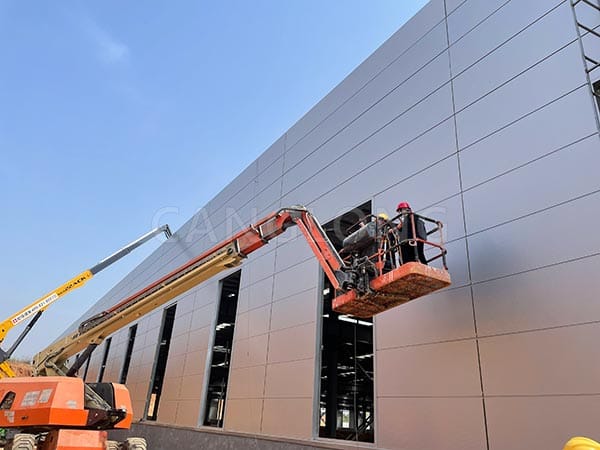
1. Thermal conductivity: the energy-saving strength of PUF sandwich panels
Thermal conductivity is the core indicator for measuring the thermal insulation performance of insulation materials. The lower the value, the better the insulation effect. The closed-cell rate of polyurethane foam (PUF) in PU foam sandwich panel is as high as over 90%, and the interior is filled with inert gas. Its thermal conductivity is only 0.022-0.028 W/(m·K), which is significantly lower than that of traditional insulation materials:
- EPS (polystyrene foam): 0.035-0.045 W/(m·K)
- XPS (extruded polystyrene): 0.030-0.035 W/(m·K)
- Rock wool/glass wool: 0.040-0.045 W/(m·K)
Advantage analysis:
a. Thinner and more efficient: Under the same insulation requirements, the thickness of PUF insulation sandwich panel can be reduced by 30%-50% compared with traditional materials, saving building space.
b. Seamless sealing: The polyurethane foaming process can achieve seamless bonding between the board and the structure, avoid the cold and hot bridge effect, and improve the overall insulation performance.
c. Energy-saving benefits: Actual engineering cases show that buildings using PUF sandwich panels can reduce air conditioning energy consumption by about 40%, with significant long-term energy-saving benefits.
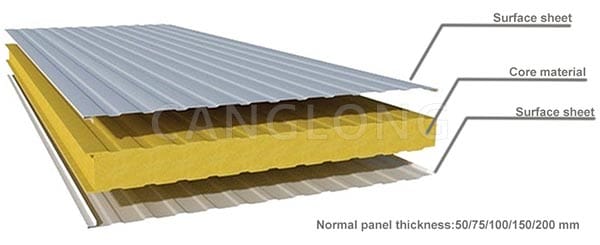
2. Fire resistance: Breaking the stereotype of flammability
Traditional polyurethane materials are often questioned for their flammability, but modern PUF insulation sandwich panel has broken through this bottleneck through formula optimization and flame retardant technology upgrades:
Flame retardant grade: High-quality PUF insulation sandwich panels can reach B1 grade (GB 8624-2012 standard), which is a flame-retardant material. When exposed to fire, the surface carbonizes and slows down the spread of flames.
Compared with traditional materials:
- EPS/XPS: flammable (B3 grade), burning releases toxic gases.
- Rock wool: A grade is non-flammable, but the insulation performance decreases after moisture absorption.
- Phenolic board: Excellent fire resistance (A grade), but brittle and high cost.
Advantage analysis:
- Safety upgrade: After adding flame retardants, PUF sandwich panels have self-extinguishing properties and meet the requirements of most building fire protection regulations.
- Stable structure: not easy to deform at high temperature, avoiding secondary damage caused by material collapse in fire.
- Comprehensive cost-effectiveness: strike a balance between fire prevention and thermal insulation performance, especially suitable for industrial plants and public buildings with high fire prevention requirements.
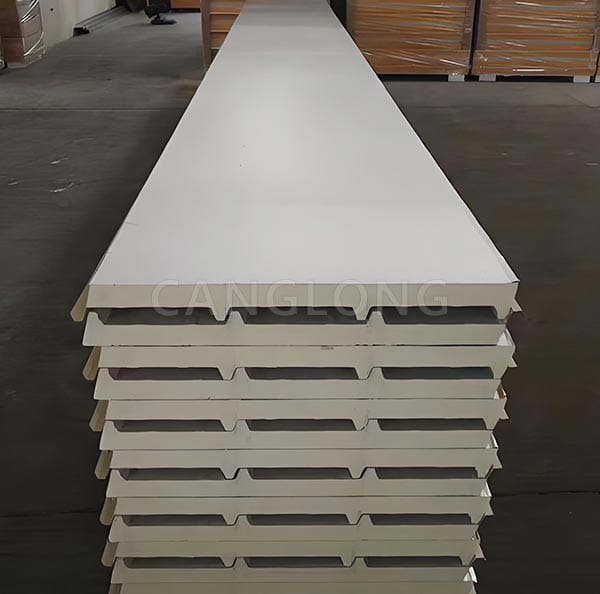
3. Economic advantage: lower cost throughout the life cycle
Although the initial purchase cost of PU foam sandwich panel is slightly higher than traditional materials such as EPS and rock wool, its economic advantages throughout the life cycle are more prominent:
High installation efficiency:
- PUF sandwich panels adopt a “sandwich” integrated structure (metal panel + polyurethane core material), which is easy to install and shortens the construction period by 30%-50%.
- Traditional insulation systems require layered construction (insulation layer + fireproof layer + decorative layer), and the labor and time costs are doubled.
Low maintenance cost:
- PUF core materials are resistant to aging and moisture, and their service life can reach more than 25 years.
- Traditional materials such as rock wool are prone to water absorption and sedimentation, and EPS is prone to aging and brittle cracking, requiring frequent maintenance and replacement.
Significant energy-saving benefits:
Take a 10,000 square meter factory as an example. Compared with EPS, the use of PUF insulation sandwich panel can save about 150,000 yuan in electricity bills per year, and the cost difference can be recovered in 3-5 years.
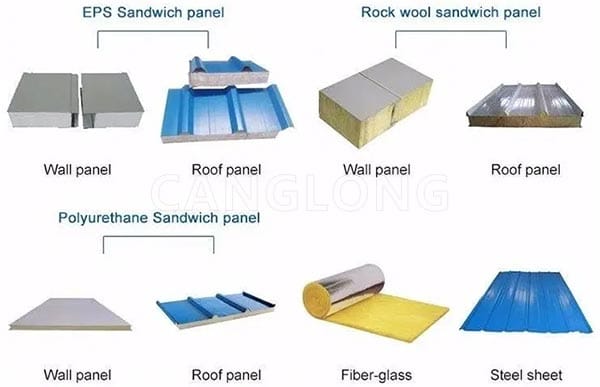
4. Application scenarios and future trends
At present, PUF insulation sandwich panels have been widely used in cold chain logistics, industrial plants, clean workshops and prefabricated buildings. With the advancement of the “dual carbon” goals, the energy-saving benefits brought by its low thermal conductivity, the continuous optimization of fire resistance, and the convenience of modular construction will further promote the increase in market penetration. In the future, through the research and development of bio-based polyurethane and the iteration of flame retardant technology, PUF sandwich panels are expected to achieve greater breakthroughs in the fields of environmental protection and safety.
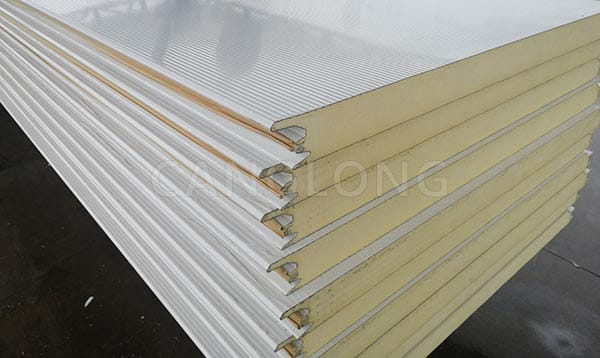
Conclusion
On the whole, PUF sandwich panels are reshaping the market pattern of building insulation materials with their ultra-low thermal conductivity, upgraded fire resistance and long-term economic advantages. For modern construction projects that pursue high efficiency, energy saving, safety, reliability and cost control, PUF insulation sandwich panel is not only a substitute for traditional materials, but also a core solution to promote the green transformation of the industry.
